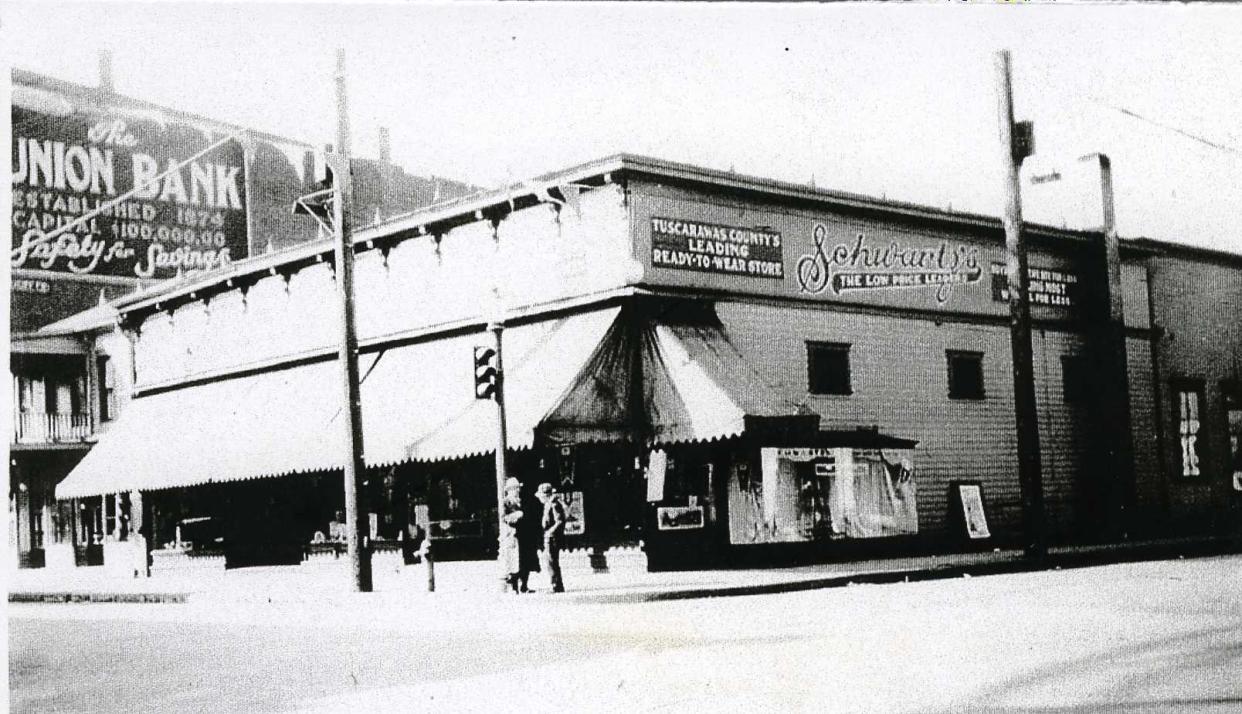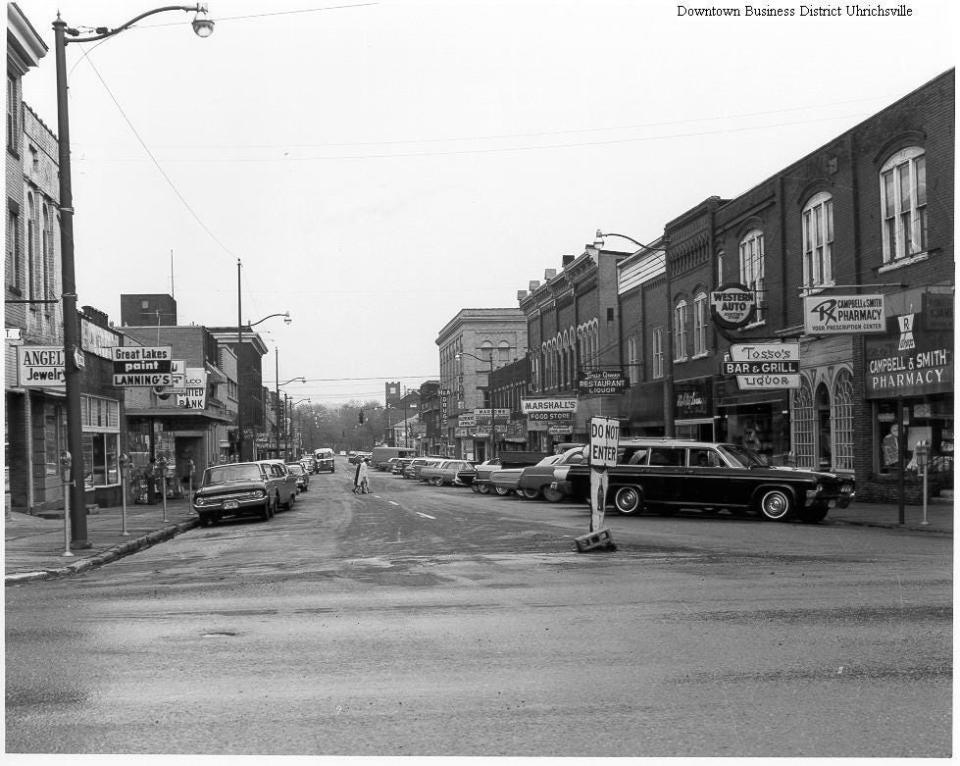Hooked on History: Uhrichsville bank collapsed after embezzlement in 1936

- Oops!Something went wrong.Please try again later.
Many banks closed their doors during the Great Depression, and the Union Bank of Uhrichsville was one of them.
But hard times were not to blame.
Instead, the bank, which had been in business since 1874, collapsed because its president, Charles E. Wheland, 45, had embezzled about $475,000 ($10 million in 2022 dollars) to cover his losses from risky Wall Street investments that had gone sour.
He had been looting the bank since 1932.
Up until the time it closed in 1936, the Union Bank had been doing well, despite the nation's economic woes.
Confidence in the American banking system was at a low ebb when Franklin Delano Roosevelt was inaugurated president on March 4, 1933. Thirty-two of the 48 states had closed their banks. The New York Federal Reserve Bank was unable to open on March 5 because fearful customers had withdrawn huge sums of money.
In response, Roosevelt declared a “bank holiday,” shutting down all the banks in the country until it could be determined which ones were solvent.
Residents in Tuscarawas County had concerns about their bank deposits as early as 1931. On Oct. 27, 1931, the banks in Dover, New Philadelphia, Uhrichsville and Dennison announced that they would limit the amount of savings withdrawals. People with accounts totaling more than $1,000 could withdraw money at the rate of $50 per month. Those with less than $1,000 could withdraw $25 per month.
"These restrictions have been made for the best interests of our depositors, industries and the county at large and will be removed as soon as conditions warrant,” the banks announced.
These banks included the Commercial Bank and the Union Bank of Uhrichsville.
The Union Bank emerged unscathed from Roosevelt’s bank holiday, reopening for business on March 15. The Commercial Bank was not so lucky. On March 23, 1933, Wheland announced that his bank had taken over the assets of the Commercial Bank.
“The management of the Commercial Bank, due to existing economic conditions, thought it desirable to discontinue banking business and merge with the Union, thus making their deposits immediately available to their customers,” the Uhrichsville Evening Chronicle announced.
On Oct. 26, 1936, examiners from the state banking department and the Federal Deposit Insurance Corp. came to the Union Bank, located at 127 E. Third St., to make a routine joint audit of the books. The auditors soon discovered a shortage of about $119,000.
Not long after that, Wheland left the bank. For more than a day, no one could find him. Then about 10 p.m. on Oct. 27, he was arrested at the Hotel Courtland in Canton and lodged in the city jail on charges of false entries and false reports.
That same day, the state banking department took control of the Union Bank and ordered it liquidated.
As bank examiners swarmed over the bank, they learned more about the scope of Wheland’s embezzlement. A safety deposit box belonging to the Muskingum Watershed Conservancy District had been looted. The conservancy district had about $200,000 in securities, government bonds and district warrants in the bank, but when examiners opened the safety deposit box, they found only $75,000 in securities left.
The other $125,000 were found in an express box ready to be shipped to a Pittsburgh bank. In his cell in the county jail, Wheland signed an admission that he had taken the securities.
“How the looting was accomplished no one knows as Conservancy District officials held both keys to the box,” the Dover Daily Reporter said.
On Nov. 2, the FDIC paid off 7,000 customers who had about $2 million in deposits in the bank.
Wheland was indicted in December on 11 counts of embezzlement and 44 counts of false entries. He was found guilty following a short trial. Common Pleas Judge E.E. Lindsay sentenced him to 10 to 30 years in the state penitentiary.
“Wheland heard the sentence without any outward indication of emotion but at times it was apparent that he was choking back tears,” the New Philadelphia Daily Times reported on Dec. 23. “He was attired in his customary grey-blue double breasted suit and when asked if he had anything to say before sentence was pronounced he stated: ‘Your Honor, I have nothing to add to what has already been said.’”
Wheland was eventually paroled.

Now, Uhrichsville — a city with more than 5,000 residents — had no bank. That was a situation that couldn’t last long if Uhrichsville hoped to exit the Depression ready to resume its growth.
On June 21, 1938, Ohio’s secretary of state announced that the United Bank of Uhrichsville had been incorporated.
The new bank opened its doors on Oct. 10, 1938, occupying the same building that the old Union Bank had once used. The bank was capitalized at $50,000.
Scott P. Myers, a retired clay product manufacturer, was president, and John D. White, a hardware merchant, was vice president. Directors were Myers, White, Charles E. Laporte, Lewis Ward, Heywood Clark, N.W. Judkins and R.W. Rutledge.
The United Bank served the Uhrichsville community until 1986, when it became part of Bank One.
Jon Baker is a reporter for The Times-Reporter and can be reached at jon.baker@timesreporter.com.
This article originally appeared on The Times-Reporter: History: Uhrichsville bank collapsed after embezzlement in 1936

